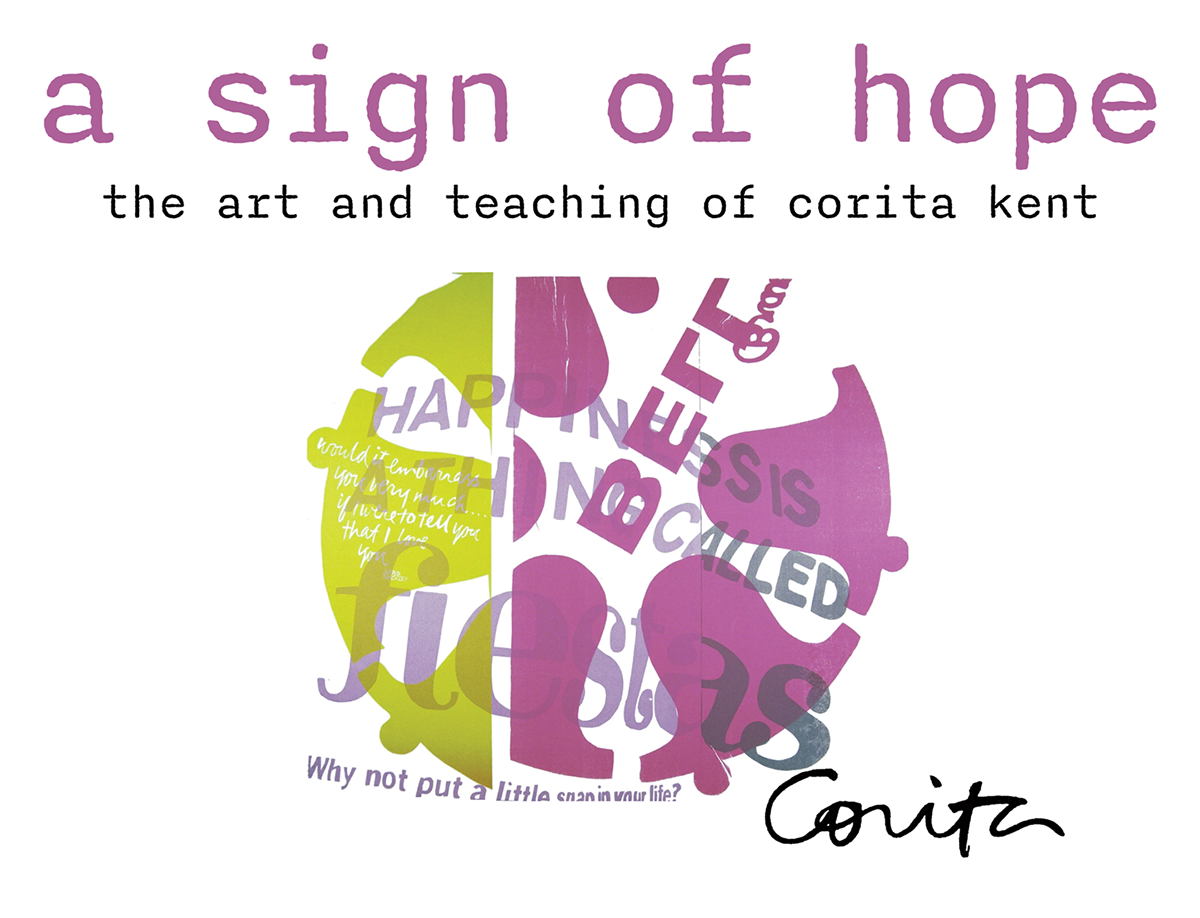Arts & Culture
Art of hope: Celebrating the teaching and activism of Corita Kent
The latest exhibition at Cowell College’s Eloise Pickard Smith Gallery, “A Sign of Hope: The Art and Teaching of Corita Kent,” reintroduces an artist who challenged societal norms and championed hope and love.



“It is a huge danger to pretend awful things do not happen. But you need enough hope to keep on going. I am trying to make hope.”
– Corita Kent
A significant artist, beloved educator, and joyous revolutionary, Corita Kent (1918–1986) forged her own path from a religious sister and art teacher at Immaculate Heart College in Los Angeles to appearing on the cover of Newsweek Magazine in 1967. Now, the latest exhibition at Cowell College’s Eloise Pickard Smith Gallery, “A Sign of Hope: The Art and Teaching of Corita Kent,” reintroduces an artist who challenged societal norms and championed hope and love.
“A Sign of Hope” is the final installment in the Eloise Pickard Smith Gallery’s three-part series honoring women artists and activists. This is the second exhibition of Corita’s work at UC Santa Cruz. The first was curated by Eloise Pickard Smith, the gallery’s founder and namesake, in 1966 at the UC Santa Cruz Field House.
Co-curated by long-time friends, former Immaculate Heart students, and fellow UC Santa Cruz alums, Sheilah Lynch (Cowell ‘73) and Ziggy Rendler Bregman (Porter ‘73), the exhibition features over 40 artworks sourced from colleagues, friends, and members of the Immaculate Heart community, who were personally connected to Corita.
“Each piece carries with it a story or memory of Corita as a mentor or a source of inspiration, representing different periods from her creative life,” said Rendler-Bregman.
Rendler-Bregman and Lynch also contributed ephemera, including letters and artifacts, collected over the years from Corita’s life as a student, teacher, and head of the art department at Immaculate Heart College, as well as objects from her compelling art career after she left teaching and religious life in 1968.
“Corita’s art was new and radical. And still feels very spirited and very much alive,” said Rendler-Bregman. “I’m seeing these students today who are desperate for things to be right, for there to be equity, for there to be justice. How do you absorb what’s going on in a world that is so disturbing? I think Corita believed that if an artist can touch some joy in us, some hope in us, we can carry on. Her art is grounded in this truth.” Born Frances Elizabeth Kent, Corita entered the Immaculate Heart of Mary order in 1936 at 18 years old. Earning a bachelor’s and eventually a master’s degree, Corita was a talented and charismatic teacher who taught art for over two decades at Immaculate Heart College in Hollywood, from 1947 to 1968.
Guided by her belief that everyone is an artist, Corita asked her students to see the everyday world with fresh eyes using a finder – a simple piece of cardboard with a rectangular cutout. Through this lens, she challenged them to embrace their creative spirit and find inspiration in the everyday. Corita also asked her students to follow her ‘rules’ of the art department, such as “Find a place you can trust and then try trusting it for a while” and “We are breaking all the rules, even our own rules.” Her teachings emphasized the importance of experimentation and breaking boundaries in art.
With bold, vibrant colors, stamped typography, and cutting social commentary, Corita’s silkscreen artwork, known as serigraphs, became renowned nationwide. Over her lifetime, she participated in over 230 shows across the country, including her notable show at UC Santa Cruz. Additionally, she undertook many prestigious commissions such as designing the iconic U.S. postage stamp, LOVE with her iconic rainbow splash and calligraphy which sold 700 million copies. She transformed a 150-foot gas tank in Boston with a rainbow. Corita’s influential teachings were compiled in a book, “Learning by Heart: Teachings to Free the Creative Spirit,” published in 1989, three years after her death from cancer.
In her lifetime, Corita produced nearly 800 serigraphs and established herself as a household name. In recent years, her artwork has been rediscovered and celebrated by major museums and institutions. She will be featured in this year’s 2024 Venice Biennial.
“In all of her art, the word hope appears frequently,” said Lynch. “Despite all of the tragedy and negativity in our world, she was optimistic that things could change, that people would look anew. We hope that students, who may be encountering her work for the first time, will come and see her work, and feel encouraged to have hope.”
The gallery hosted an opening reception on Sunday, April 7 and will hold an alumni reception on April 12, from 3–5 p.m. (Register here). Additionally, every Friday, there will be student-led art activities inspired by Corita’s work, providing an opportunity for art making and creating; more information is available on the Eloise Pickard Smith Gallery website.